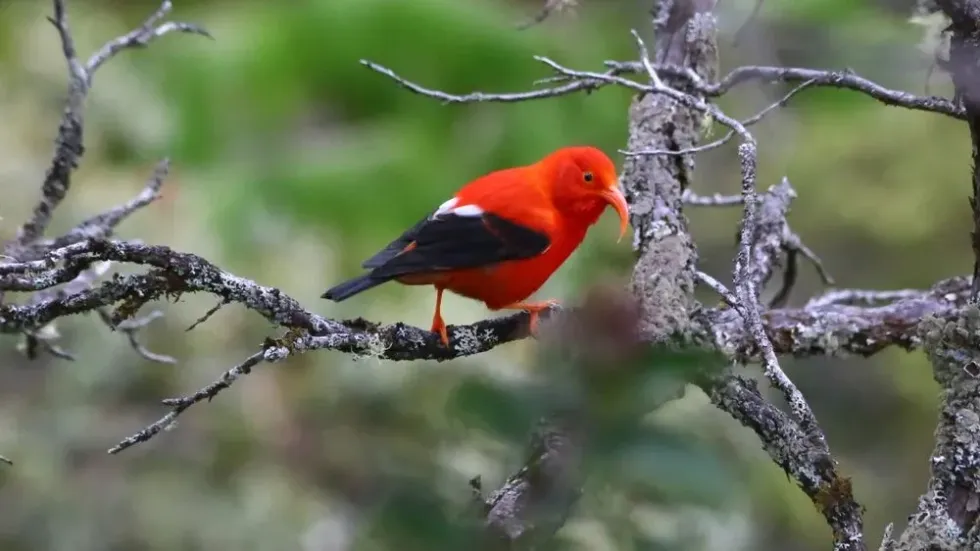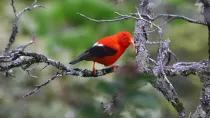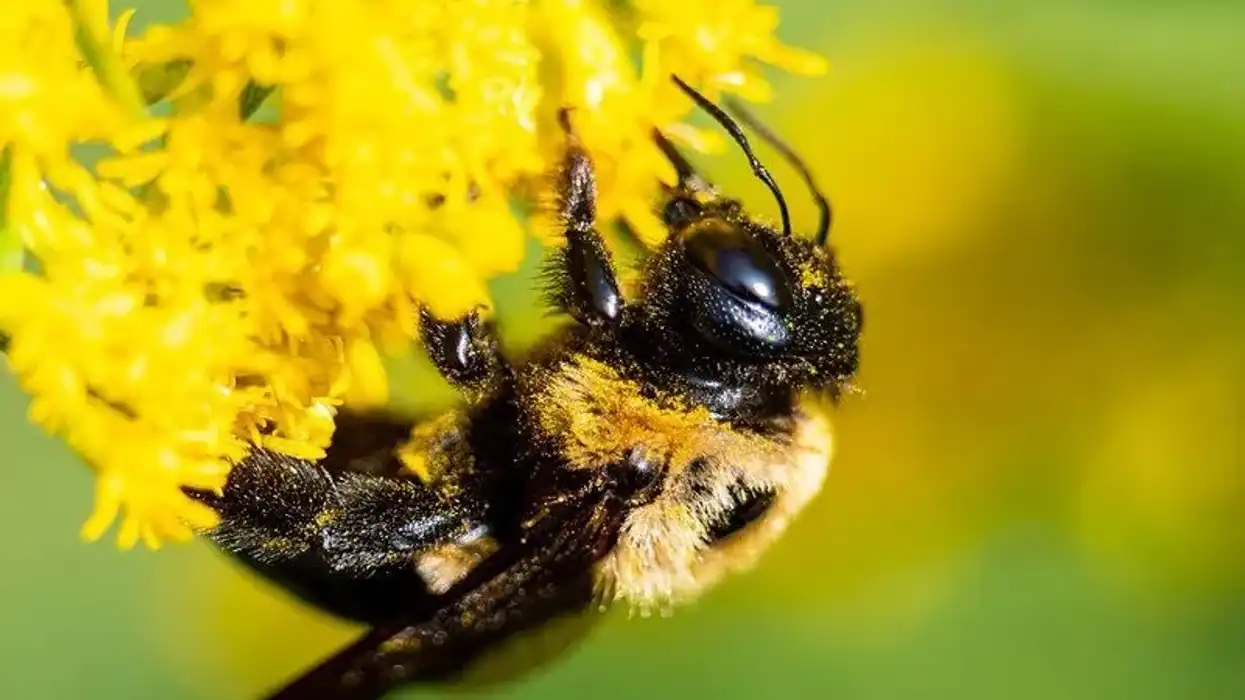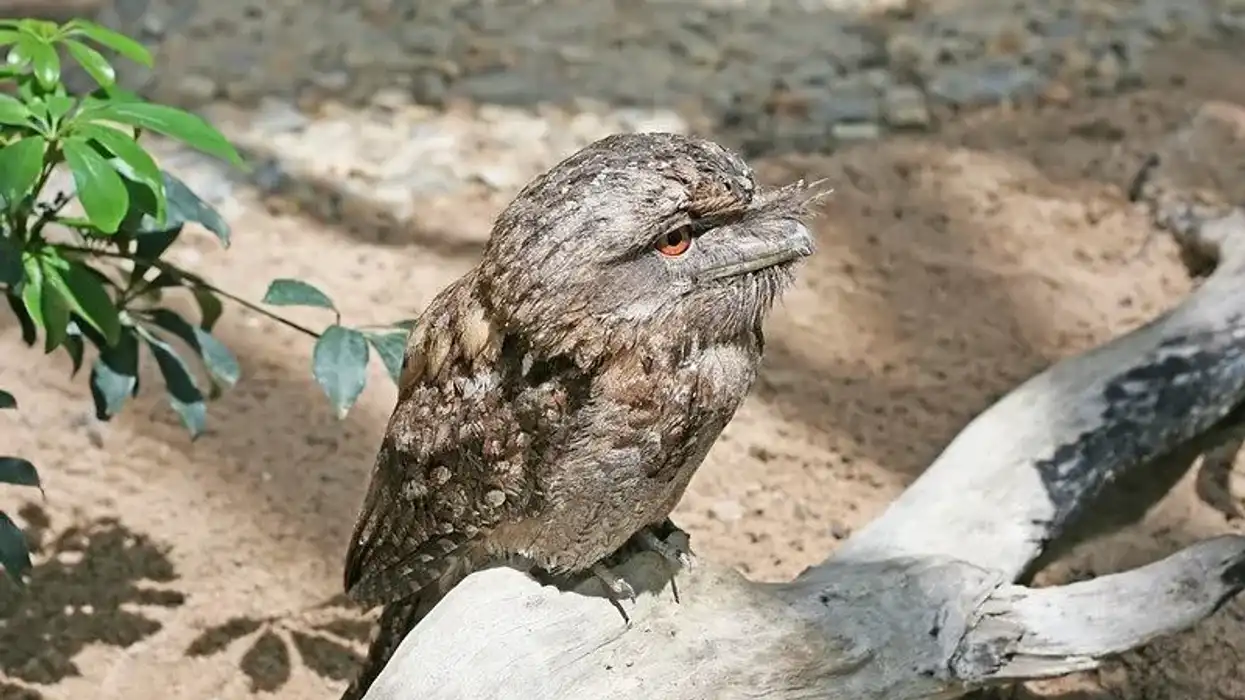First arrived in Hawaii a few million years ago, these avians used to be the most popular avians with about 56 species across the islands, but now they face the threat of going completely extinct due to a lot of different reasons.
The major reason is thought to be avian malaria which they are not immune to.
Another factor for the decline in their population is that members of this family went through rapid evolution to the extent that they do not share many resemblances to these avians anymore, hence proving the Darwinian theory of evolution. Even the ones that are recognized to be honeycreepers, their bill shapes vary greatly due to their different food habits.
Keep reading on to learn more interesting facts about these beautiful creatures.
If you like reading interesting facts about animals, please check out our articles on Hawaiian Crows and rockhopper penguins.
Hawaiian Honeycreeper Interesting Facts
What type of animal is a Hawaiian honeycreeper?
The Hawaiian honeycreeper is a name commonly used as a progenitor of the current songbirds that arrived in Hawaii quite a few million years ago. These birds managed to evolve into a different species not only vary in the color of their plumage but also their food habits.
The common factor is that most of them have some sort of a song and that most of them are more or less nectarivorous.
What class of animal does a Hawaiian honeycreeper belong to?
Hawaiian honeycreepers are types of small avians that arrived in the Hawaiian forests some million years ago and then evolved into different species of birds that are closely related yet vary a little from each other.
Experts have found that these birds are pretty closely related to finch-like birds in their general behavior, breeding habits, and even brightly colored plumage.
How many Hawaiian honeycreepers are there in the world?
It is hard to say just how many of these birds are left but where there were once as many as 56 bird species, there are only about 18 species left of them. It is unfortunate that once the most common birds found throughout Hawaiian forests are now on the verge of extinction.
Where does a Hawaiian honeycreeper live?
These avians are known for living in the tropical forests of the Hawaiian Islands.
What is a Hawaiian honeycreeper's habitat?
They build their nests on top of the tree branches with twigs, grass, roots, and leaves which often look like open cups.
Who do Hawaiian honeycreepers live with?
These diurnal avians are known to live in family groups or even as part of flocks that hunt for food together.
How long does a Hawaiian honeycreeper live?
Hawaiian honeycreepers with their curved chisel-like bills are known to live for about five to 12 years. The once-thriving population of this bird is now dwindling very fast due to various reasons.
One of the major reasons is mosquitoes carrying avian malaria which these birds are not immune to. As a result, where once these birds were the most heavily distributed species on the Hawaiian Islands, there are as few as just 18 species left to roam the forest region of Hawaii.
How do they reproduce?
There are various species of Hawaiian honeycreeper out there but their breeding process is pretty similar. The mating season is known to take place throughout May and July, but it has been known to extend from January through August.
The breeding pair is known to build an open-cup-like nest that is fiber-lined and filled with twigs, grass, roots, and leaves on top of trees.
Females are solely responsible for incubating the eggs, while males are responsible for feeding the mother bird and the hatchlings. These birds are born completely vulnerable with no feathers and blind.
What is their conservation status?
Unfortunately, these birds are facing the tremendous danger of going extinct as their numbers are constantly decreasing throughout the forests of Hawaii. There once used to be about 56 species of these finch-like endangered birds found throughout the Hawaiian Islands, but now there are only about 18 species left.
Concerningly, their numbers are also on a constant decline.
A major reason for this is mosquitoes carrying avian malaria tend to infect honeycreepers quite easily and as is evident their immunity can not keep up.
It is very sad to see that where once these finch-like birds were the most common species of birds found throughout Hawaii, they are now almost extinct. The IUCN has placed Hawaiian honeycreepers in the Endangered category.
Hawaiian Honeycreeper Fun Facts
What do Hawaiian honeycreepers look like?
These finch-like birds can sometimes look quite similar to finches based on their appearance.
Some of the species have evolved to possess a short bill that is ideal for eating fruit seeds as well as tropical flowers, while others have thin bills that are sometimes straight or even extremely curved which helps them to forage for food like insects and nectar.
These differences have formed due to their different diets.
They also have a tube-like tongue that is fringed at the tip for feeding on nectar. The feathers on their wings are divided into nine main feathers, once there used to be a tenth feather but it has disappeared over time due to lack of use.
Their colors too vary greatly.
While some of them are bright yellow, others have green plumage, some crimson red while other birds of this species have also been reported to be multicolored.
Male members of this bird species are known to be more vibrant in color than female members. These birds first appeared in Hawaii quite a few million years ago, and since then have changed so rapidly that some of them are not even recognized as Hawaiian honeycreepers anymore.

How cute are they?
These finch-like birds are very cute with their small bodies, thin bills, and brightly colored plumage. Male Hawaiian honeycreepers are often more vibrantly colored with orange and yellow patches than female Hawaiian honeycreepers.
The shapes of their bills also differ slightly because of constant evolution from their ancestral shape.
In the past, there used to be 56 species of these nectarivorous birds, but now there are only about 18 species of Hawaiian honeycreepers left in their natural habitat. The once-thriving population of the Drepanididae is now endangered and facing extinction in their forest range.
How do they communicate?
From the time of their first introduction to the Hawaiian Islands a few million years, the one thing that has stayed stable about these birds is their songs. Just like all other songbirds, the Drepanididae also use simple yet beautiful songs to communicate with each other.
They also use body gestures such as flying between trees in the forest to communicate. Hawaiian honeycreepers are unfortunately going almost extinct due to various reasons that are causing the populations of these birds to decline.
How big is a Hawaiian honeycreeper?
These avians are small in size and on average, they are about 4-8 in (10-20 cm) big which is about the same size as a Colorado River toad.
How fast can a Hawaiian honeycreeper fly?
It is hard to say just how fast these creatures fly but as they are very small it is assumed that their speed is not very fast. A lot of these types of birds have already gone extinct which has impacted the study of these avians negatively.
Thankfully, many conservation groups like the Maui forest bird recovery project group are working very hard to protect the remaining members of the Hawaiian honeycreeper family.
How much does a Hawaiian honeycreeper weigh?
As there are a lot of members in this family of avians, their weight varies greatly. On average, they weigh somewhere around 0.02-0.07 lb (10-33 g).
What are the male and female names of the species?
There are no gender-specific names for these nectarivorous birds. Males are called male Hawaiian honeycreepers and females are called female Hawaiian honeycreepers. The breeding pairs often build a nest lined with fiber and filled with twigs, grass, roots, and leaves before laying eggs. Males of this species are often found to be more vibrantly colored than females.
What would you call a baby Hawaiian honeycreeper?
The babies of Hawaiian honeycreepers are called hatchlings. They are born completely blind and vulnerable and depend on their parents to defend them. Adult males are responsible for feeding their young.
What do they eat?
These birds are known to eat a wide range of foods which has caused the shape of their bills to change over time. From tropical flowers, seeds, fruit, and different insect species they are known to eat everything.
These birds developed finch-like bills for ones who feed on seeds, and long curved chisel-like bills for foraging for insects.
Another major food source for them is the nectar which their tube-like fringe-tipped tongues help to feed on. Unfortunately, these beautiful birds are prone to diseases that have pushed them almost to the verge of going extinct.
Are they dangerous?
Hawaiian honeycreepers are not at all dangerous. These songbirds are small with beautifully bright-colored feathers, and a bill that changes shape depending on the diet of the particular species of Hawaiian honeycreeper.
They inhabit the islands of Hawaii from north to south and east to west. They used to be the most common birds on the island, but unfortunately, a lot of the species have gone extinct due to various reasons.
Would they make a good pet?
Most species of Hawaiian honeycreepers are already extinct, and the ones that are left are facing the threat of going extinct soon. It is advised not to keep these island birds as pets, even if they are small beautiful, and not dangerous at all.
They are also known for having simple yet beautiful songs that are enchanting to listen to but keeping the Drepanididae as pets is not something we recommend. Even if they are not dangerous to us, we can become potentially hazardous to them.
Did you know...
Due to rapid evolution, the shape of the bills of these avians varies tremendously depending on their feeding habits.
Male members are more brightly colored than the females.
How did honeycreepers find their way to Hawaii?
Although it is hard to say just how these birds found their way to Hawaii, scientists have found that one of the closely related species of these avians, the finch came from Asia. After constant processes of evolution which even changed their bill shape, these birds made the tropical tree-filled forest range of the Hawaiian Islands their native habitat.
What has most likely happened to the other 38 species of honeycreepers?
A lot of members of this species have gone extinct due to many reasons after their first arrival to Hawaii nearly a few million years ago. One of the main reasons for this is that they are very susceptible to diseases like avian malaria carried by mosquitoes.
Another big reason is that it is likely that they have evolved enough to go under notice as they do not share many resemblances to the original Hawaiian honeycreepers.
Here at Kidadl, we have carefully created lots of interesting family-friendly animal facts for everyone to discover! Learn more about some other birds including lesser prairie chicken, or tawny frogmouth.
You can even occupy yourself at home by drawing one on our Hawaiian honeycreeper coloring pages.










